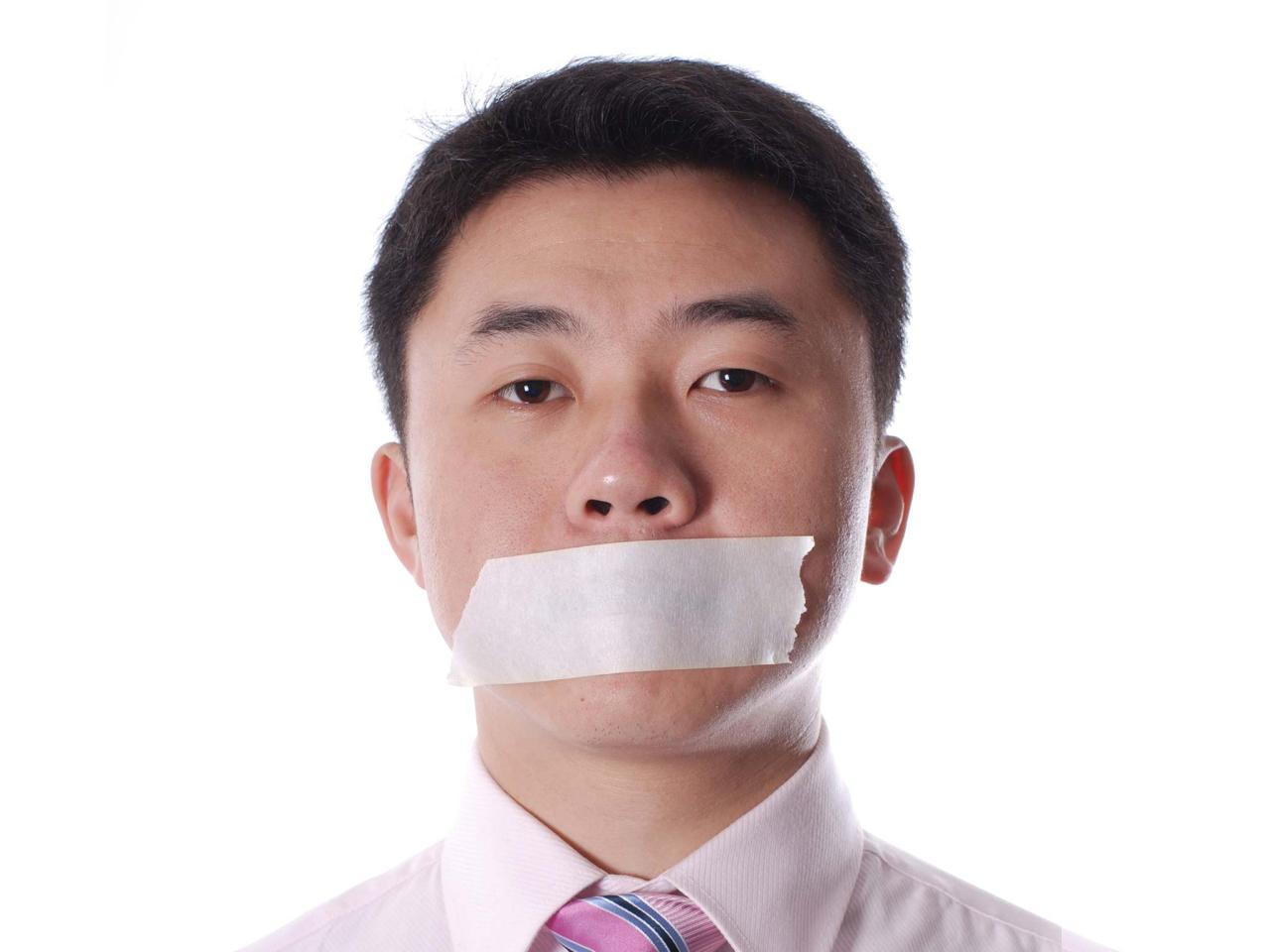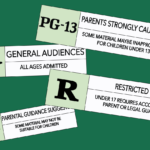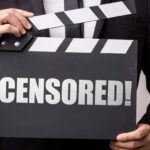The Role of Censorship in American 21+ Films is a complex and multifaceted issue, deeply intertwined with evolving societal norms, legal battles, and technological advancements. From the restrictive Hays Code era to the contemporary landscape of streaming services, the methods and impacts of censorship have dramatically shifted. This exploration delves into the historical context, examining the influence of the MPAA rating system, the ongoing conflict between artistic expression and societal expectations, and the significant economic implications for the film industry. We will also consider the role of self-censorship and the ever-changing influence of public opinion on what is deemed acceptable on screen.
This analysis will consider the legal framework surrounding censorship and the First Amendment, comparing American practices to those in other countries. We will investigate how technological advancements have challenged traditional censorship methods and explore the potential future of censorship in the context of emerging technologies and evolving social attitudes. Case studies of specific films will illuminate the complexities and controversies inherent in navigating these challenges.
Historical Context of Censorship in American Cinema
The history of censorship in American 21+ films is a complex and evolving narrative, shaped by societal morals, technological advancements, and legal battles. From the strict moral codes of the early 20th century to the more nuanced legal framework of today, the regulation of adult content has undergone significant transformations, impacting the creative freedom of filmmakers and the viewing experiences of audiences.
The evolution of censorship regulations can be broadly categorized into distinct eras, each characterized by unique approaches and challenges. The early days of cinema saw a largely self-regulated industry, guided by informal agreements and social pressures. This eventually gave way to more formalized systems, with significant consequences for the industry and its creative output.
The Hays Code Era and its Influence
The Hays Code, formally known as the Motion Picture Production Code, dominated the American film industry from 1930 to 1968. Enforced by the Motion Picture Producers and Distributors of America (MPPDA), this strict moral code prohibited the depiction of various topics considered inappropriate, including nudity, sexual content, profanity, and violence. The Code’s impact was pervasive, shaping the narratives and visual styles of films for decades. It limited creative expression, forcing filmmakers to employ euphemisms and indirect storytelling to circumvent its restrictions. While ostensibly aimed at maintaining public morality, the Code also served to protect the industry from government intervention and potential legal challenges. The Hays Code’s influence extended beyond its official lifespan, shaping the self-censorship practices of filmmakers even after its formal demise.
The Impact of Landmark Court Cases
Several landmark Supreme Court cases significantly altered the legal landscape of adult film censorship. Burstyn v. Wilson (1952) established that films were entitled to First Amendment protection as a form of expression, challenging the previous notion that they were merely a form of entertainment subject to greater regulatory control. This decision paved the way for a more permissive environment for filmmakers, though it did not eliminate censorship altogether. Subsequent cases, such as Miller v. California (1973), refined the definition of obscenity, providing a three-pronged test to determine whether material is legally obscene. This test, while controversial, provided a more specific framework for courts to adjudicate cases involving adult content. The legal battles surrounding censorship continue to this day, with ongoing debates about the appropriate balance between free speech and community standards.
Comparing Censorship Practices Across Eras
Comparing censorship practices across different eras reveals a clear shift from strict moral codes to a more legally nuanced and contested system. The Hays Code era was characterized by a highly restrictive and self-imposed system of censorship, resulting in a homogenized and often sanitized portrayal of adult themes. In contrast, the post-Hays Code era, despite the existence of legal frameworks and community standards, allowed for a greater degree of creative freedom, albeit within the bounds of legal definitions of obscenity. This shift reflects broader societal changes in attitudes towards sexuality, violence, and freedom of expression. The contemporary landscape, marked by the rise of streaming services and the internet, presents new challenges to censorship, with ongoing debates about online content regulation and the impact of algorithms on content filtering.
The Role of the MPAA Rating System
The Motion Picture Association of America (MPAA) rating system plays a significant role in shaping the landscape of American 21+ films. Established in 1968, it provides a framework for classifying films based on their content, guiding parents and influencing the types of films produced and distributed. While intended to inform audience choices, the system’s effectiveness and fairness remain subjects of ongoing debate.
The MPAA employs a panel of parents who review submitted films and assign ratings based on a set of criteria. These criteria consider various elements, including violence, language, sexual content, drug use, and thematic elements. The ratings themselves—G, PG, PG-13, R, and NC-17—indicate the level of potentially objectionable content, with R and NC-17 films generally restricted to audiences 17 and 18 years of age and older, respectively. The process involves deliberation and discussion among the panel members, leading to a final rating decision.
MPAA Rating Criteria and Their Application
The MPAA’s rating guidelines are quite detailed, outlining specific considerations for various types of content. For instance, violence is assessed based on its graphic nature, frequency, context, and impact. Similarly, sexual content is evaluated based on its explicitness, duration, and overall context within the film’s narrative. The presence and nature of language, drug use, and thematic elements also factor into the rating decision. The system aims to provide a consistent and transparent framework, though the subjective nature of evaluating these elements often leads to inconsistencies and debates. For example, two films with similar levels of violence might receive different ratings depending on the context in which the violence is presented.
Effectiveness of the MPAA Rating System
The MPAA rating system’s effectiveness in regulating content and influencing audience choices is a complex issue. While it provides a general guideline, its impact varies. The system’s success is arguably most evident in its ability to inform parents about the content of films, enabling them to make more informed choices for their children. However, the system’s influence on actual audience behavior is less clear-cut. Many adults disregard the ratings entirely, while others may use them as a general guide but still watch films outside their preferred rating range. Furthermore, the availability of films through various streaming services and online platforms can often bypass traditional rating systems, reducing their overall effectiveness.
Controversies Surrounding MPAA Rating Decisions
The MPAA’s rating decisions have been the subject of considerable controversy over the years. Critics frequently point to inconsistencies in rating similar films, suggesting potential biases or a lack of transparency in the rating process. Specific instances often involve films with strong thematic content or those addressing sensitive social issues, where the rating assigned may seem disproportionate to the actual content. The subjective nature of the rating criteria leaves room for interpretation and disagreement, further fueling controversies. The lack of publicly available detailed explanations for rating decisions also contributes to the perception of bias and lack of transparency. These criticisms highlight the need for greater clarity and consistency in the MPAA’s rating procedures.
Artistic Expression vs. Censorship
The tension between artistic expression and censorship in 21+ films is a complex and ongoing debate. The desire to create provocative and challenging works often clashes with societal norms and expectations regarding acceptable content, leading to restrictions and alterations that can impact the artistic integrity of the final product. This conflict highlights the inherent difficulties in balancing freedom of expression with the potential for harm or offense. The line between artistic merit and harmful content is subjective and constantly evolving, making it a challenging area for regulation.
The impact of censorship on artistic expression in adult films is significant. While aiming to protect audiences from potentially harmful content, censorship can inadvertently stifle creativity and limit the exploration of complex themes. This can result in films that are watered down, less impactful, and ultimately less artistically fulfilling. The process of negotiating with censors can also force filmmakers to compromise their vision, potentially resulting in a final product that is far removed from their original intent.
Examples of Films with Prominent Censorship Debates, The Role of Censorship in American 21+ Films
Several films have sparked intense debates surrounding censorship. “Pink Flamingos” (1972), John Waters’ notorious exploitation film, pushed boundaries with its graphic depictions of violence, sexuality, and taboo subjects, leading to significant censorship and controversy. Similarly, “The Last Tango in Paris” (1972) faced considerable censorship due to its explicit sexual content and controversial themes, leading to legal battles and altered releases in various countries. These examples illustrate the challenges faced by filmmakers attempting to navigate the complex landscape of censorship and artistic expression. The level of censorship imposed varied depending on the region and the prevailing social attitudes. The debates surrounding these films continue to inform contemporary discussions about censorship and its impact on artistic freedom.
Instances Where Censorship Limited Artistic Expression in Adult Films
Censorship often manifests as cuts, alterations, or outright bans of scenes deemed too graphic or offensive. For instance, many films exploring themes of sexual violence or exploitation have faced significant cuts to reduce the graphic nature of the content. This can result in a loss of narrative coherence or a diminished impact of the scene’s intended message. The removal of such scenes can also prevent filmmakers from fully exploring the complexities of these sensitive issues, thereby limiting the film’s potential artistic impact. The pressure to conform to censorship guidelines can also lead to self-censorship, where filmmakers preemptively avoid potentially controversial themes or imagery to avoid the risk of censorship or negative backlash.
Hypothetical Scenario: Artistic Freedom vs. Societal Norms
Imagine a film exploring the psychological effects of online radicalization, depicting graphic scenes of online harassment and the eventual descent of a character into violent extremism. The director aims to create a visceral and unflinching portrayal of this complex issue, using realistic depictions of online abuse and the character’s gradual radicalization. However, the film’s distributor fears that the graphic nature of the content will lead to censorship, resulting in significant cuts or a complete ban. The conflict arises between the director’s desire to create a powerful and artistically honest portrayal of a critical social issue and the distributor’s concern about potential negative consequences and financial losses due to censorship. This hypothetical scenario illustrates the ongoing struggle between artistic freedom and the pressures of societal norms and the potential for censorship in the realm of 21+ films. The ultimate decision on how to balance these competing interests will depend on a variety of factors, including the prevailing social climate, the film’s target audience, and the potential legal and financial implications.
The Impact of Technology on Censorship

The rise of the internet and streaming platforms has fundamentally reshaped the landscape of censorship in American 21+ films. Traditional methods, largely reliant on physical distribution and a centralized rating system, are struggling to keep pace with the decentralized and rapidly evolving nature of online content. This shift has created both opportunities and challenges for those seeking to regulate adult material, while simultaneously impacting the ability of filmmakers to express themselves freely.
The challenges of regulating content in the digital age are multifaceted. The sheer volume of content uploaded to platforms daily makes comprehensive human review practically impossible. Furthermore, the global reach of the internet makes enforcing national censorship laws difficult, as content hosted in one country might be easily accessible in another with less stringent regulations. The ease with which content can be copied and shared online also circumvents traditional methods of controlling distribution. This necessitates a move away from reactive censorship towards more proactive and technologically advanced approaches.
The Effectiveness of Traditional and New Censorship Methods
Traditional censorship methods, primarily relying on pre-release reviews and ratings systems like the MPAA, have proven relatively effective in controlling the distribution of films through traditional channels like theaters and physical media. However, their effectiveness diminishes significantly in the online environment. New technologies, such as content filtering algorithms and automated detection systems, are increasingly employed to identify and remove inappropriate content. These algorithms use various techniques, including matching, image recognition, and machine learning, to scan vast quantities of data and flag potentially problematic material. While these technologies offer potential for greater efficiency, they are not without limitations. False positives and biases in algorithms can lead to the removal of legitimate content, while sophisticated methods of circumventing these systems are constantly being developed. The effectiveness of these new methods, therefore, is a continuous arms race between technological advancements in censorship and the creative circumvention of these systems by content creators and distributors. A crucial consideration is the potential for these technologies to be misused for political or ideological censorship, highlighting the need for transparency and accountability in their application.
Self-Censorship in the Film Industry
Self-censorship in the film industry refers to filmmakers’ decisions to restrict or alter their creative content to avoid potential negative consequences, rather than due to external pressure from regulatory bodies. This can manifest in various ways, from subtle alterations to significant changes in plot, characterization, or thematic elements. The motivations behind these choices are complex and often intertwined, impacting the final product significantly.
Filmmakers often engage in self-censorship due to a confluence of factors. Financial considerations are paramount; studios may be hesitant to greenlight projects deemed too controversial, fearing box office failure or negative publicity. The desire to secure wider distribution, particularly in international markets with varying censorship laws, also plays a significant role. Furthermore, anticipating audience reactions and avoiding potential boycotts or negative reviews can lead to filmmakers toning down potentially offensive or challenging content. This self-imposed restraint can ultimately limit the exploration of complex themes and potentially stifle artistic innovation.
Examples of Self-Censorship in 21+ Films
Several instances of self-censorship can be observed in R-rated and NC-17 films. For example, a scene depicting graphic violence might be softened or shortened to avoid an NC-17 rating, impacting the film’s intended emotional impact. Similarly, sexually explicit scenes may be toned down or removed entirely to appeal to a broader audience or to avoid potential backlash. The decision to avoid controversial political or social commentary, potentially alienating a portion of the viewership, is another common example. These choices, while driven by various motivations, often result in a film that deviates from the filmmaker’s original vision.
Motivations Behind Self-Censorship
Financial concerns often drive self-censorship. A film with a controversial theme might struggle to secure funding or distribution deals, leading filmmakers to compromise their artistic vision to ensure profitability. The desire for a wider audience is also a significant factor. A film rated NC-17, for example, faces severe limitations in distribution and marketing, significantly impacting its potential revenue. This often compels filmmakers to make alterations to avoid such a restrictive rating. Furthermore, anticipating negative public reaction or boycotts can influence filmmakers to self-censor potentially sensitive content. The pressure to maintain a positive public image and avoid controversy can outweigh the desire to present a more uncompromising artistic statement.
Comparison of External and Internal Censorship Pressures
| Factor | External Censorship (e.g., MPAA, government) | Internal Censorship (Self-Censorship) | Impact on Film Industry |
|---|---|---|---|
| Source | External regulatory bodies or government agencies | Filmmakers, studios, distributors | Shapes the overall landscape of acceptable content. |
| Mechanism | Formal ratings systems, legal restrictions, bans | Self-imposed limitations on content, creative compromises | Influences both the type of films produced and the way they are marketed. |
| Impact on Artistic Expression | Can directly restrict or prohibit certain types of content | Can subtly influence creative choices, leading to self-imposed limitations | Can limit the range of stories told and perspectives presented. |
| Consequences of Non-Compliance | Legal penalties, restricted distribution, fines | Potential financial losses, negative publicity, audience backlash | Creates a complex interplay between creative freedom and commercial viability. |
The Influence of Public Opinion and Morality
The evolution of censorship in American 21+ films is inextricably linked to the shifting tides of public opinion and prevailing moral standards. Societal attitudes towards sex, violence, and other mature themes have profoundly impacted the types of content deemed acceptable for release, influencing both formal censorship regulations and the self-imposed restrictions of the film industry. This dynamic relationship between public sentiment and censorship is a continuous process of negotiation and adaptation.
Public opinion, often expressed through advocacy groups and grassroots movements, plays a crucial role in shaping censorship policies. The pressure exerted by these groups, whether advocating for stricter regulations or greater artistic freedom, directly influences the decisions of regulatory bodies and the self-censorship practices adopted by filmmakers. Understanding this interplay is key to comprehending the complex history of censorship in American cinema.
Societal Attitudes and Censorship Practices
Changes in societal attitudes have directly influenced the level and type of censorship applied to films. For example, the relatively conservative moral climate of the early to mid-20th century resulted in strict censorship codes, like the Hays Code, which heavily restricted depictions of sex, violence, and other mature themes. As societal views became more liberal in the latter half of the 20th century, the Hays Code’s influence waned, leading to a more permissive environment and the rise of the MPAA rating system. The ongoing cultural conversations surrounding issues like LGBTQ+ representation, depictions of violence against women, and the portrayal of marginalized communities continue to shape public expectations and influence the self-regulation of the film industry. The increased acceptance of diverse perspectives and identities has pushed for more inclusive and nuanced representations in film, challenging traditional censorship norms.
The Role of Advocacy Groups and Public Pressure
Advocacy groups, both conservative and liberal, have consistently played a significant role in shaping censorship policies. Groups advocating for stricter regulations often cite concerns about the potential negative impact of violent or sexually explicit content on audiences, particularly children. Conversely, groups championing artistic freedom emphasize the importance of unrestricted creative expression and argue against censorship as an infringement on freedom of speech. Public pressure, often manifested through boycotts, protests, and public campaigns, can significantly influence the decisions of regulatory bodies and the self-censorship practices of filmmakers. The success of such campaigns depends on the mobilization of public opinion and the ability to frame the issue in a way that resonates with a broad audience. For instance, campaigns against specific films perceived as overly violent or sexually exploitative have occasionally led to changes in distribution practices or even to the alteration of films themselves.
A Timeline of Shifting Public Opinion and Censorship
The relationship between public opinion and censorship is not static; it evolves over time.
| Period | Public Opinion/Moral Climate | Impact on Censorship |
|---|---|---|
| Pre-1930s | Relatively lax censorship, local regulations varied widely; concerns about morality were present, but enforcement was inconsistent. | Local censorship boards and inconsistent standards resulted in a fragmented regulatory landscape. |
| 1930s-1960s | Conservative moral climate, strong emphasis on family values; significant public concern over the influence of movies on youth. | Implementation and enforcement of the Hays Code, resulting in strict self-censorship within the film industry. |
| 1960s-1980s | Increasing liberalization of societal attitudes towards sex and violence; growing calls for artistic freedom. | Gradual decline of the Hays Code; rise of the MPAA rating system, providing a more nuanced approach to content regulation. |
| 1980s-Present | Continued evolution of societal attitudes; ongoing debates surrounding violence, sex, and other mature themes; rise of new media and online platforms. | Continued evolution of the MPAA rating system; ongoing discussions about the effectiveness of self-regulation; emergence of new challenges related to online content and streaming services. |
Censorship and the First Amendment: The Role Of Censorship In American 21+ Films
The First Amendment to the United States Constitution guarantees freedom of speech and expression, a right that extends to filmmakers and distributors. However, this right is not absolute, and the courts have grappled with balancing the protection of free expression with other legitimate government interests, such as the prevention of obscenity or the protection of minors. The legal arguments surrounding censorship and the First Amendment are complex and constantly evolving, shaped by landmark Supreme Court cases and changing societal norms.
The interplay between the First Amendment and censorship in the film industry is a constant negotiation. While the Constitution protects the right to create and distribute films, the government retains the power to regulate certain aspects of film distribution, particularly concerning material deemed harmful to minors. This regulatory power is frequently challenged in court, leading to a complex body of case law defining the boundaries of free expression in the context of film. The tension lies in determining where the line between protected expression and unprotected content falls.
Supreme Court Cases Shaping Censorship Law
Several Supreme Court cases have significantly shaped the legal framework for censorship in the US, establishing precedents that continue to influence contemporary debates. These cases often involve balancing the constitutional right to free speech with the government’s interest in protecting public morality or the welfare of children. The Court’s decisions have evolved over time, reflecting shifts in societal attitudes and understanding of freedom of expression. For instance, early cases tended to favor stricter censorship, while more recent rulings have emphasized a broader interpretation of protected speech. These rulings have not only impacted the film industry but have also set precedents for other forms of media.
Legal Protections for Adult Films vs. Other Media
The legal protections afforded to adult films differ from those afforded to other forms of media, primarily due to the nature of the content. While adult films enjoy First Amendment protection, this protection is not absolute. The Supreme Court has established a three-part test to determine whether material is obscene and therefore unprotected by the First Amendment: (1) whether the average person, applying contemporary community standards, would find that the work, taken as a whole, appeals to the prurient interest; (2) whether the work depicts or describes, in a patently offensive way, sexual conduct specifically defined by the applicable state law; and (3) whether the work, taken as a whole, lacks serious literary, artistic, political, or scientific value. This test, established in *Miller v. California* (1973), is notoriously difficult to apply consistently, leading to ongoing debate and legal challenges. Other forms of media, such as news reporting or political commentary, generally receive stronger First Amendment protection due to their inherent social value. The difference in legal treatment stems from the perceived societal harm associated with adult content compared to other forms of expression. The line between protected expression and obscenity remains a subject of ongoing legal and societal debate.
Economic Impacts of Censorship
Censorship in the film industry, while often justified on moral or ethical grounds, carries significant economic consequences. These impacts ripple through the entire production pipeline, affecting budgets, marketing strategies, and ultimately, box office returns. The extent of these financial effects varies depending on the nature and severity of the censorship, as well as the film’s genre and target audience.
The financial ramifications of censorship are multifaceted. Increased production costs, resulting from alterations to comply with censorship guidelines, are a primary concern. Changes to scripts, reshoots, and additional editing can quickly inflate budgets, potentially jeopardizing profitability. Furthermore, censorship can limit a film’s market reach, impacting both domestic and international distribution. Marketing campaigns might need to be adjusted to avoid highlighting scenes that have been cut or altered, leading to additional costs and potentially hindering the film’s appeal. Ultimately, reduced box office revenue is the most direct consequence of censorship, potentially leading to decreased investment in future projects and a chilling effect on creative freedom.
Production Cost Increases Due to Censorship
Censorship demands often necessitate costly revisions during post-production. For instance, a film initially slated for an R-rating might be forced to undergo extensive editing to achieve a PG-13 rating, potentially requiring reshoots, voice-over replacements, and extensive CGI work to remove or alter explicit content. These changes can significantly increase the film’s overall budget, impacting profitability. The financial burden of such revisions often falls on the production company, potentially reducing profit margins or even leading to losses if the film fails to recoup the added costs at the box office. In extreme cases, studios might decide to shelve projects entirely if the cost of complying with censorship is deemed too high.
Impact of Censorship on Distribution and Marketing
Censorship can significantly impact a film’s distribution strategy and marketing campaign. A film that has been heavily edited to meet censorship requirements may struggle to attract its intended audience, especially if the alterations fundamentally change the narrative or tone. Marketing materials might need to be revised to reflect the altered content, leading to additional costs and potential inconsistencies. International distribution can be further complicated, as censorship standards vary across countries, requiring additional edits or even preventing a film’s release in certain territories. This fragmentation of the market can significantly reduce a film’s potential revenue stream.
Hypothetical Case Study: The Impact of Censorship on “Crimson Tide”
Imagine a hypothetical scenario where the fictional film “Crimson Tide,” a tense submarine thriller, initially contains a scene depicting graphic violence and strong language during a crucial underwater battle sequence. This scene is crucial to establishing the film’s tone and escalating tension. However, to obtain a wider PG-13 rating, the studio is forced to significantly alter the scene, removing the violence and replacing the strong language with milder alternatives. This requires expensive reshoots and CGI work, adding $5 million to the film’s $60 million budget. Furthermore, the marketing campaign, initially focused on the intensity of the underwater battle, needs to be revised, potentially diminishing the film’s appeal to the action-thriller audience. The result: a less impactful film that underperforms at the box office, failing to recoup the additional $5 million spent on censorship compliance and ultimately resulting in a significant financial loss for the studio. This scenario demonstrates how even a single censorship decision can have far-reaching and costly consequences.
International Comparisons of Censorship
The United States, while possessing a robust First Amendment, isn’t alone in grappling with the complexities of censorship in film, particularly concerning adult content. A comparison with other nations reveals a fascinating spectrum of approaches, shaped by unique cultural norms, legal frameworks, and political climates. These differences highlight the subjective nature of what constitutes acceptable content and the diverse ways societies regulate the cinematic portrayal of adult themes.
The American system, primarily governed by the MPAA rating system, relies on self-regulation and industry-led classification. This contrasts sharply with countries employing stricter state censorship boards that pre-screen films and dictate permissible content. Some nations maintain a more liberal approach, with minimal or no censorship, while others take a more restrictive stance, often reflecting religious or moral viewpoints. These differing approaches significantly impact the availability and presentation of films deemed “adult” in different regions.
Variations in Censorship Practices
The MPAA’s rating system, while influential, allows for a degree of creative freedom compared to countries with more rigid censorship boards. For instance, films rated R in the US might face outright bans or extensive cuts in countries with stricter regulations. Conversely, films deemed acceptable in the US might be subjected to significant alterations or even prohibition in countries with more conservative cultural norms. This variance often stems from differing interpretations of acceptable depictions of violence, sexuality, and potentially offensive language. The level of government involvement also plays a crucial role, with some nations having highly centralized censorship bodies while others rely on a more decentralized system involving various regulatory agencies.
Examples of Differing Censorship Levels
Consider the film “The Wolf of Wall Street.” While released uncut in the US with an R rating, it faced significant cuts and alterations in various countries. Some countries banned the film altogether due to its depiction of excessive drug use, debauchery, and sexual content. Similarly, films like “Brokeback Mountain,” dealing with homosexuality, experienced varying levels of censorship and acceptance across different nations, reflecting differing cultural attitudes towards LGBTQ+ themes. In contrast, films that might be considered tame in the US could face restrictions in countries with stricter regulations on even mildly suggestive content.
Cultural Influence on Censorship
Cultural differences profoundly impact censorship regulations. Countries with predominantly religious populations may exhibit stricter censorship of content perceived as contradicting religious beliefs. Similarly, nations with more conservative social norms may impose stricter limitations on depictions of violence, sexuality, or political dissent. Conversely, countries with more liberal social attitudes might allow for a greater range of expression, even within adult-themed films. These cultural nuances shape not only what is considered acceptable but also how those standards are enforced and interpreted.
The Future of Censorship in American 21+ Films
Predicting the future of censorship in American 21+ films requires considering the interplay of technological advancements, evolving societal norms, and the enduring tension between artistic expression and societal expectations. The coming years will likely witness a complex and dynamic landscape, shaped by factors that are both predictable and unpredictable.
The continued evolution of media consumption habits and technological capabilities will significantly impact censorship practices. Streaming services, for instance, already operate with varying levels of content moderation, often tailored to specific regional regulations and user preferences. This fragmentation of distribution platforms may lead to a more nuanced and less uniform approach to censorship, where different platforms adopt different standards.
The Role of Emerging Technologies in Shaping Future Censorship Debates
Artificial intelligence (AI) and machine learning are poised to play a crucial role in future censorship debates. AI-powered content moderation tools are already being used to identify and flag potentially offensive material, but their application raises concerns about bias and accuracy. The potential for algorithmic censorship, where AI systems automatically remove content without human oversight, presents both opportunities and risks. For example, an AI system trained on a biased dataset might disproportionately flag content created by marginalized groups, leading to unintended forms of censorship. Conversely, AI could assist human moderators by efficiently screening vast amounts of content, allowing for a more focused review of potentially problematic material. The effectiveness and fairness of these systems will be central to future discussions about censorship. The ongoing development and refinement of AI in content moderation will be a critical area to watch.
The Potential Impact of Evolving Social Norms on Future Censorship Policies
Societal attitudes towards violence, sexuality, and other potentially offensive content are constantly shifting. Changes in these norms will inevitably influence censorship policies, although the speed and direction of change are difficult to predict. The increased visibility and discussion of sensitive topics, facilitated by social media and online platforms, may lead to a greater tolerance for diverse forms of expression. However, countervailing pressures, such as concerns about the impact of violent or sexually explicit content on young people, may also lead to calls for stricter regulations. For example, the rise of #MeToo movement has significantly altered societal perceptions of sexual harassment and assault, potentially influencing the portrayal of these themes in films and impacting how they are reviewed by rating boards. Similarly, evolving attitudes toward body image and representation could influence how depictions of nudity or body modification are treated. The ongoing dialogue surrounding these social changes will continue to shape the future of censorship.
Case Studies
This section examines three films that faced significant censorship controversies, analyzing the arguments surrounding the censorship attempts, the eventual outcomes, and their lasting impact on the film industry and the broader discourse around artistic expression and freedom of speech. Each case study illustrates the complex interplay between creative intent, societal norms, and legal frameworks governing the production and distribution of adult-oriented films.
The Last Temptation of Christ (1988)
Martin Scorsese’s controversial adaptation of Nikos Kazantzakis’s novel sparked outrage among religious groups for its depiction of Jesus as a flawed and human character, including a scene depicting Jesus experiencing a moment of doubt and imagining a life with Mary Magdalene.
The film faced intense protests and calls for boycotts, primarily from Christian organizations who viewed the portrayal of Jesus as blasphemous and disrespectful to their religious beliefs. Arguments against the film’s release centered on the potential for causing offense to a significant portion of the population and undermining religious faith. Conversely, supporters of the film argued for the protection of artistic expression and the right to interpret religious figures in diverse ways, emphasizing that the film was a work of fiction based on a literary interpretation, not a literal depiction of religious scripture. Ultimately, despite the controversy, the film was released with an R rating, and while it received considerable criticism, it also garnered critical acclaim for its artistic merit and directorial vision. The controversy surrounding the film highlighted the ongoing tension between religious sensitivities and artistic freedom.
Natural Born Killers (1994)
Oliver Stone’s violent and stylized portrayal of two young serial killers, Mickey and Mallory Knox, generated considerable debate regarding its potential impact on viewers and the glorification of violence.
Critics argued that the film’s graphic depictions of violence and its fast-paced, stylized aesthetic could desensitize audiences to the horrors of real-world violence and even inspire copycat crimes. Concerns were raised about the film’s potential to incite violence, particularly among young and impressionable viewers. Conversely, proponents argued that the film was a commentary on the media’s obsession with violence and the desensitization of society, not an endorsement of it. They also stressed the importance of artistic freedom and the right to create provocative and challenging works, even if they are disturbing. The film was released with an R rating, but its release spurred intense public debate and renewed discussion about the responsibility of filmmakers in depicting violence. The controversy fueled discussions about the relationship between media violence and real-world violence, a debate that continues today.
The Wolf of Wall Street (2013)
Martin Scorsese’s biographical black comedy depicting the life of Jordan Belfort, a stockbroker who engaged in rampant fraud and excessive hedonism, faced criticism for its explicit depiction of drug use, sexual content, and the glorification of a morally reprehensible lifestyle.
Concerns were raised about the film’s potential to normalize or even glamorize the behavior depicted, potentially influencing viewers’ perceptions of wealth, success, and morality. Critics argued that the film’s excessive depiction of debauchery could send a negative message, particularly to younger audiences. In contrast, supporters defended the film as a satirical commentary on the excesses of Wall Street culture and the moral decay within the financial industry. They argued that the film’s depiction of Belfort’s life was not intended as an endorsement but rather as a cautionary tale. The film was released with an R rating, and while it received significant praise for its acting, direction, and satirical elements, it also fueled discussions about the ethical responsibilities of filmmakers in portraying morally ambiguous characters and potentially controversial subject matter. The controversy highlighted the ongoing challenge of balancing artistic expression with the potential for negative social impact.
Last Recap
Ultimately, the role of censorship in American 21+ films reveals a dynamic interplay between artistic freedom, societal values, and technological innovation. While the MPAA rating system provides a framework for regulating content, its effectiveness remains a subject of ongoing debate. The evolution of censorship reflects broader societal shifts in attitudes towards mature themes, while technological advancements continuously present new challenges to established regulatory mechanisms. The ongoing conversation surrounding censorship highlights the enduring tension between protecting audiences and safeguarding the freedom of artistic expression within the film industry.






